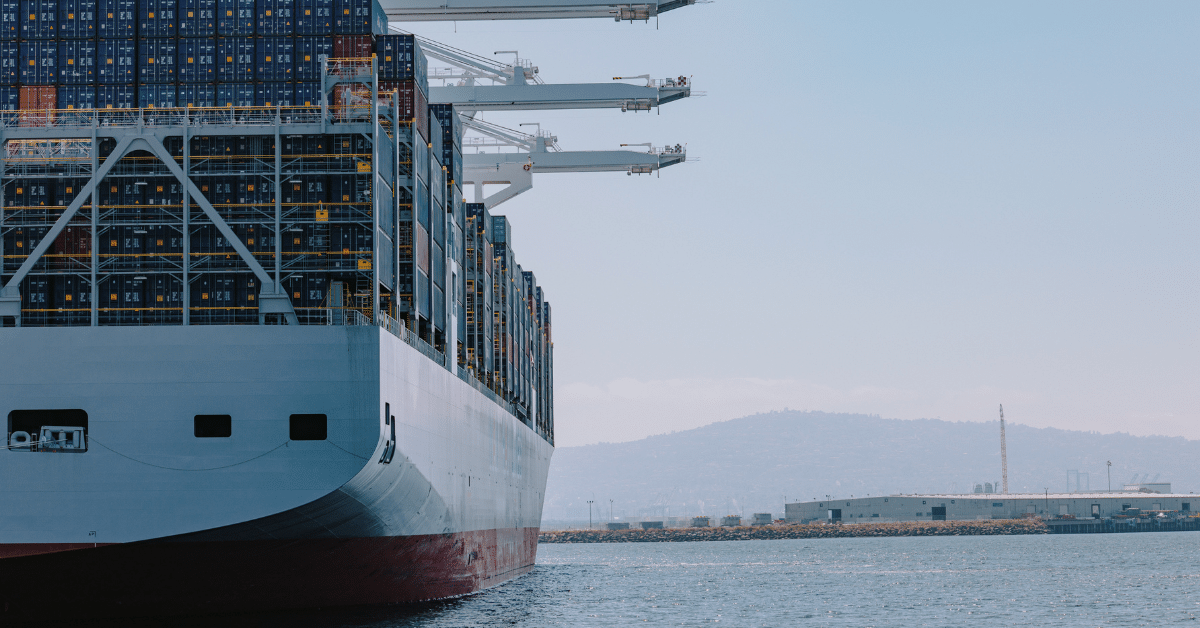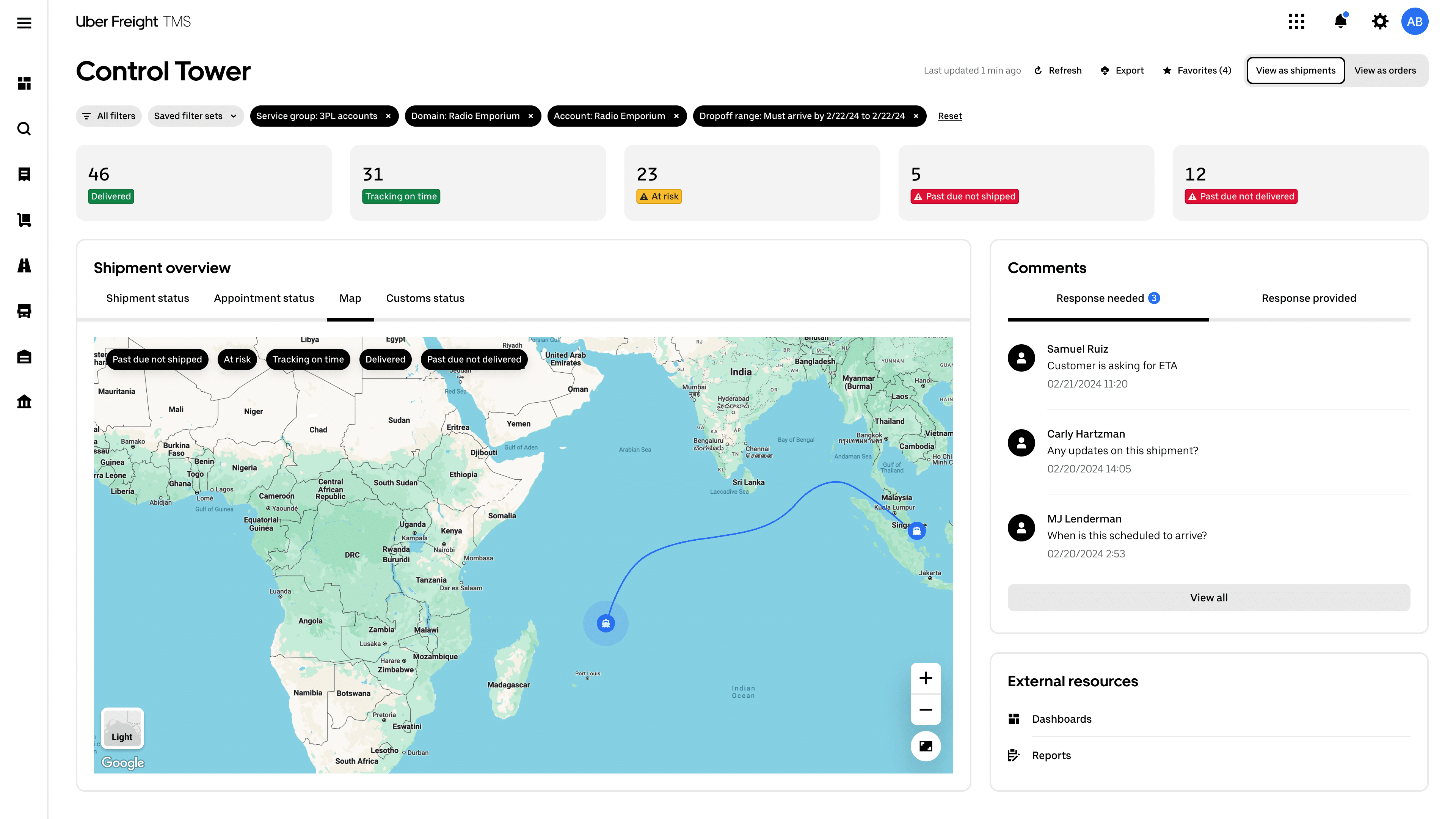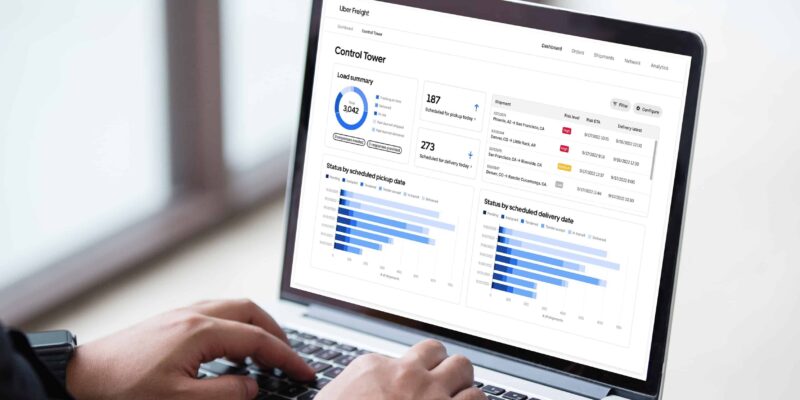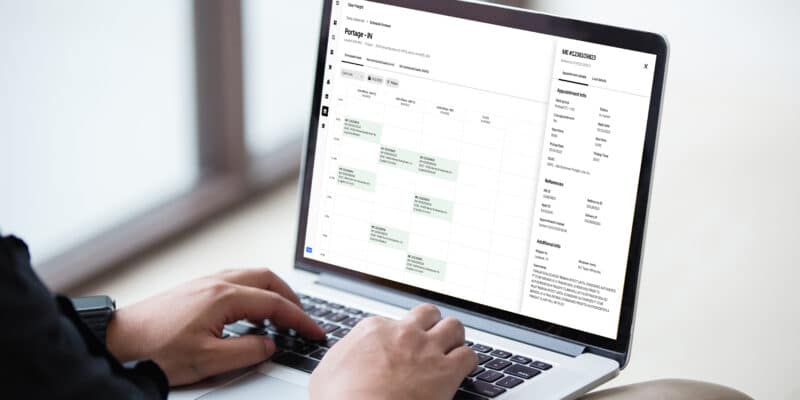Delivering real-time visibility for ocean transportation on Uber Freight TMS

By: Mollie LeBlanc, Vice President of Operations, Uber Freight, and Shradha Balakrishnan, Senior Product Manager, Uber Freight
More than 80% of the world’s international trade occurs via ocean freight. With hundreds of thousands of containers spread across various ships and routes, shippers who work with ocean carriers need to know where their shipments are at all times. Without visibility, cost and service can suffer: companies might not know whether shipments will arrive late or early, and may have to pay fines as a consequence.
Visibility isn’t just about peace of mind: when supply chains become volatile, companies must know where their containers are so they can manage exceptions proactively and reduce detention and demurrage. Accurate and timely visibility helps shippers stay ahead of potential disruptions and could save thousands or even millions on unexpected costs.
This is especially relevant at a time when ocean transportation has been defined by global crises. In the Red Sea—home to 12% of annual global trade—ongoing military standoffs have endangered commercial shipments and caused extensive delays in transport journeys as the crisis forces companies to invest in alternative routes and modes. Meanwhile, across the globe, droughts in Panama have precipitated severe limits on canal traffic.
The Uber Freight team continually works to deliver next-generation visibility for logistics teams and help them better navigate these types of events. Our latest technology expansion is specifically tailored to help companies that utilize ocean and air transportation stay ahead of the tide by gaining accurate, real-time insights. New features within the Uber Freight Transportation Management System (TMS) allow users to connect seamlessly with ocean and air shipment data—meaning logistics teams can access comprehensive, real-time visibility for all shipments across modes in one easy-to-use platform.
Creating accurate, real-time visibility into 99% of ocean shipments
Last year, our updates to Uber Freight TMS gave shippers unprecedented visibility via the Control Tower module, which provides a 360-degree view of all shipments. While our team offers ocean execution as a managed services partner, this new update brings visibility into the TMS for those who wish to maintain direct relationships with ocean carriers and international third-party logistics providers. Now, within the Control Tower, logistics teams can use the map tool to visualize all shipments, filter by mode, and pinpoint shipments for rerouting.

The module also eliminates the need for logistics teams to manually track their loads on carrier websites or through freight forwarders, and instead offers a more streamlined and efficient experience. According to container tracking API provider Vizion, this global solution covers 99% of ocean shipments by gathering continual shipment updates from more than 40 data sources. Using API-based freight tracking software, the solution can produce updates every 15 minutes for more accurate and timely information.
The updates also leverage automation to make it easier than ever for users to access real-time insights for their ocean and air freight. Often, shippers assume they need to get their list of carriers and perform individual integrations with each. The new update allows the TMS to seamlessly and automatically import real-time data into the Uber Freight platform. Logistics teams unlock unprecedented transparency without the hassle of manual integration, resulting in an instant-on solution. And getting started is simple and straightforward, leveraging just a few pieces of ocean data to gain automatic updates on shipment progress.
Because the Uber Freight TMS updates continually with location breadcrumbs tracked after each update, teams can monitor situations as they develop and determine whether alternative routes or ports need to be considered. We’ve seen users quickly pivot timely shipments from ocean to air freight to reduce delays, and secure cargo insurance coverage and tools needed to move goods in dangerous regions.
Companies, including global chemical manufacturer Kronos Worldwide, Inc., are already leveraging these tools to help minimize risk and improve shipment safety.
“We operate globally and the technology that supports us needs to as well. Our teams needed better ways of tracking shipments internally and across modes including ocean, rail, and truck,” said Memsud Musabasic, Kronos Director of Global Warehousing and Transportation. “We were among the first to sign up for Uber Freight’s ocean visibility pilot. Being able to see where ocean shipments are at any time will help us stay on-track and deliver better service to our customers.”
Be prepared with a tech-forward TMS
Global supply chains are inherently complex, and logistics teams need a comprehensive TMS that provides visibility into all aspects of the load lifecycle. At Uber Freight, our team has become more thoughtful in offering customers improved visibility into their shipments. This update strengthens our position as a trusted advisor, helping shippers around the globe make the most of the data at their fingertips.
Logistics teams also need a solution that turns data into actionable business insights, and unlocks functionality to allow teams to pivot to different modes and carriers in order to address disruption. Our new solutions join a range of features in Uber Freight’s TMS designed to equip shippers with a proactive toolkit to address any potential challenges.
From real-time tracking to strategic routing insights, plus an end-to-end view of all shipments, the Uber Freight TMS couples a user-friendly interface with powerful, data-driven tools. To learn more about our TMS software, request a demo today.
1) United Nations Conference on Trade and Development’s Review of Maritime Transport



